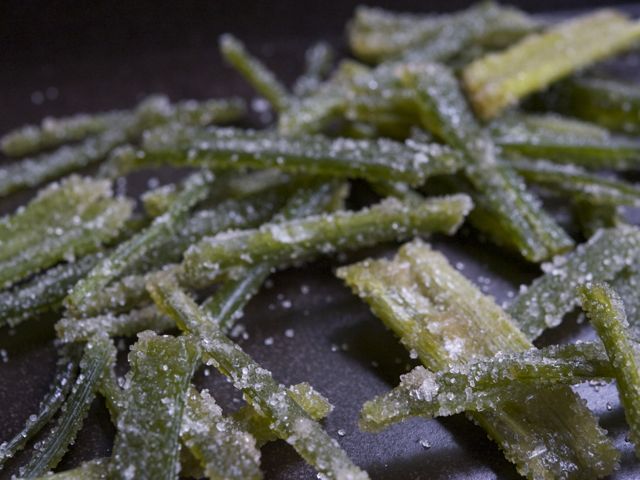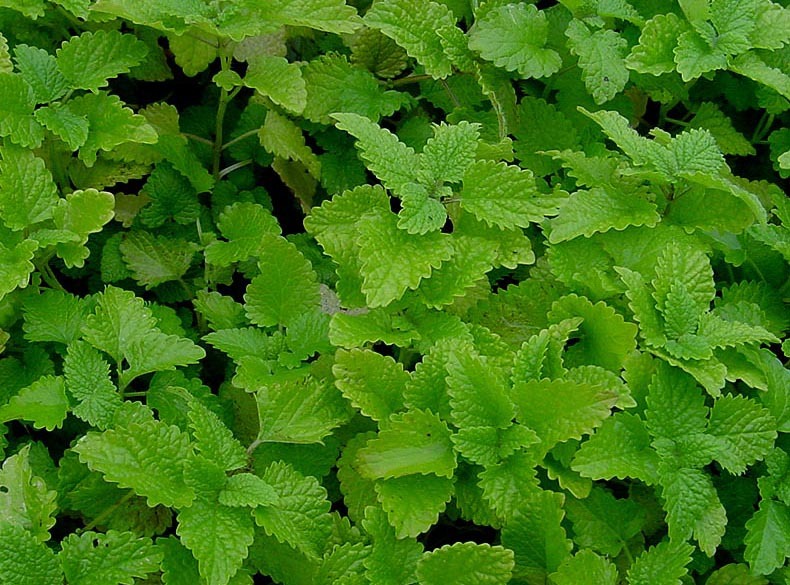Angelica, known in some parts as Holy Ghost or Wild Celery, is a member of the genus Umbelliferae, which also endows the kitchen with parsley, carrot, parsnip, fennel, anise, coriander, celery, dill, cumin, lovage and caraway. Its subtly sweet flavor hints at many if not all these sister plants, with prominent notes of licorice and celery. Its botanical name, angelica archangelica, derives from the legend that it was the archangel Michael who told of its medicinal use, and every part of the plant has been prized for centuries for remedies addressing diverse complaints, especially digestive and bronchial problems. The leaves are used for tea; the roots and seeds flavor wine and spirits, including gin, Chartreuse, Bénédictine, vermouth and absinthe; the ground dried root and candied stems are added to baked goods; and the fresh leaves enliven salads, soups, stews, custards and ice cream. A flute-like instrument with a reedy sound can even be made of its hollow stem (entertaining for kids), and I’ve also seen the stems used as straws for drinks.
Read More...
Twitter @glutton4life
9.29.11 T is for Tisane
In yesterday's post, I mentioned the wonderful tisane, or herbal infusion, that concluded my meal at Stone Barns. It inspired me to go out and snip some herbs from my garden to make one at home. (And it didn't cost $15!) I experimented with fresh mint, lavender, Spanish sage and hyssop, all of which made delightfully aromatic brews. As per the restaurant's directions, I did not mix up the various herbs, but savored them separately so as not to muddy the flavors. With cooler weather on its way (eventually), I decided to cut many of these declining plants and dry the leaves so that I can enjoy tisanes all winter long and be reminded of the lush greenery of my summer garden. I recommend you try this, even if you can only get your hands on mint. It's a fun process, and the tisanes are very relaxing and therapeutic. Many of these herbs are restorative, aid in digestion and help calm the spirit.
Read More...
Read More...
9.15.09 It's the Balm
The first year in my house upstate, I discovered big patches of a leafy green plant that smelled deliciously lemony. It popped up as soon as the earth warmed and couldn't be deterred. Turns out it's lemon balm (Melissa officinalis), a perennial herb in the mint family that is native to the Mediterranean. Mine grows into big bushes that have little white flowers by summer's end. These are full of nectar and attract the bees, and thus the genus name Melissa, which means "honey bee" in Greek.Lemon balm has long been used as a medicinal herb because of its antibacterial, antiviral and sedative properties. It is said to be effective against the herpes virus. A poultice made from the leaves can be applied to any sores or lesions. You can also rub the crushed leaves on your skin as a mosquito repellant. It is exceptionally high in antioxidants and also exhibits antithyrotropic activity, making it useful in treating hyperthyroidism. Amazing, no? Try simply steeping the leaves in hot water for a soothing tea. Or make this panna cotta, infused with a delicate lemony flavor.
Read More...
Read More...










